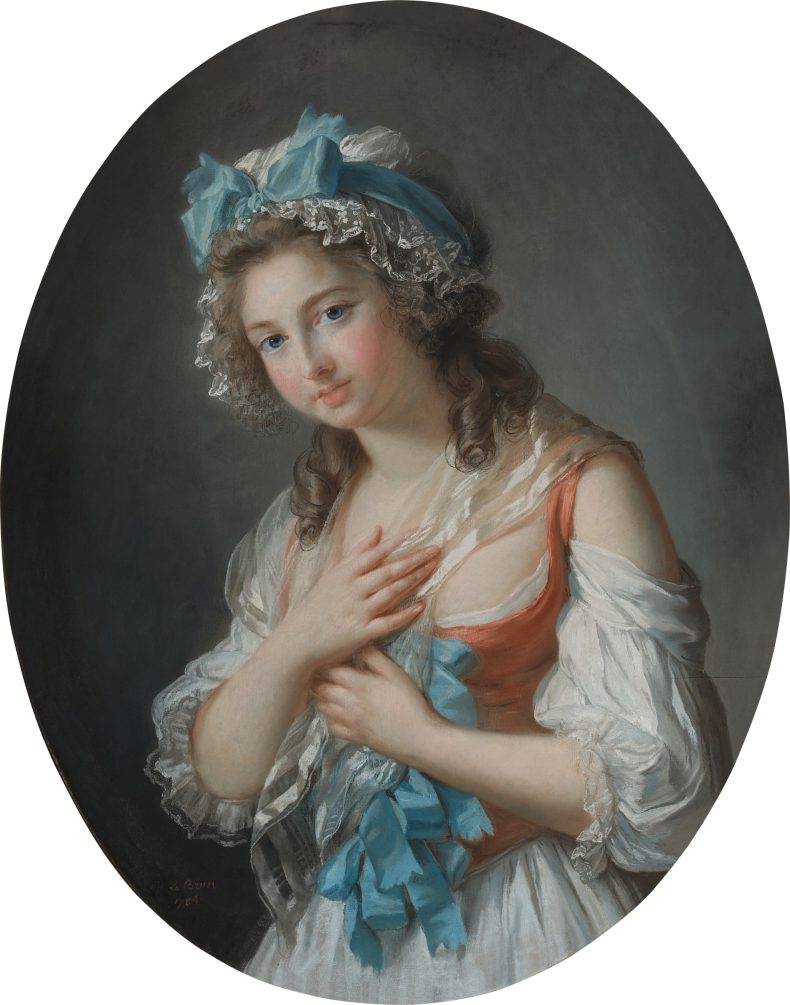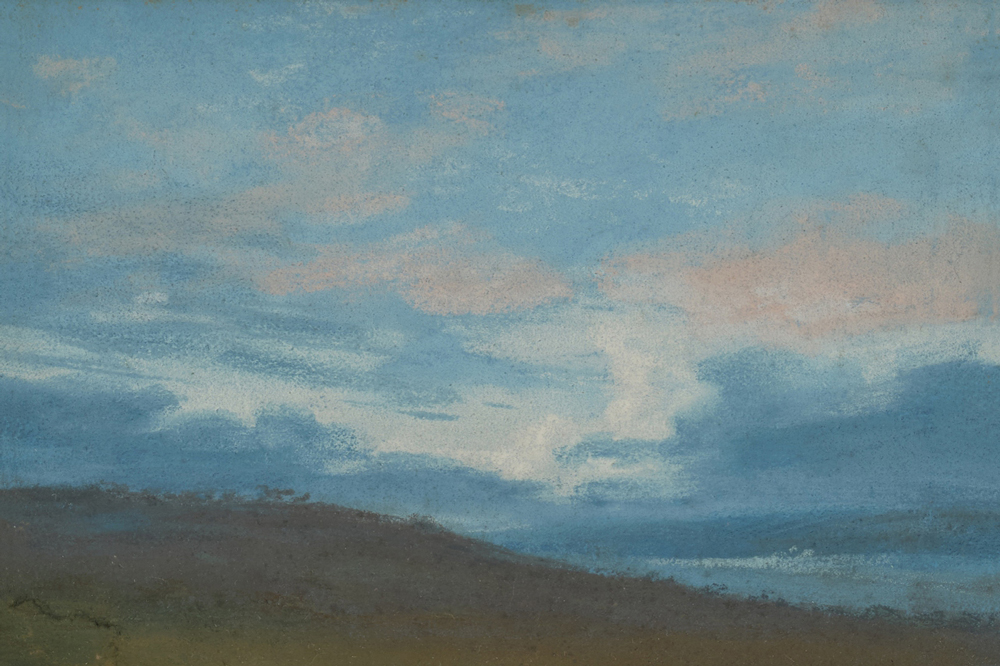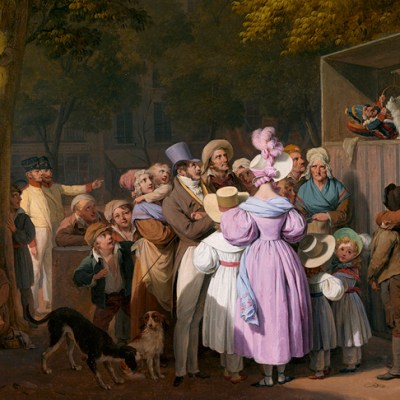A gust of wind rolls over a hill, catching the blades of grass. The clouds in the darkening sky are pushed along, glimmers of sunlight turning them now white, now peach, now deep blue. It’s a small, everyday scene, but it is filled with movement and life.
It may be a surprise to learn that this pastel drawing is a work by Élisabeth Vigée Le Brun, a painter best known for her intimate portraits of members of the Ancien Régime. It is one of eight landscapes done in pastel (and 15 works in total) by the artist coming up for auction at Sotheby’s New York in what will be the largest collection of Vigée Le Brun’s works ever to appear on the market. The sale, that takes place on 31 January, named ‘A Scholar Collects’, is made up of a selection of paintings, drawings and sculptures from the collection of the art historian Joseph Baillio, a Vigée Le Brun specialist.
Élisabeth Vigée Le Brun was born in Paris in 1755. Her father, the artist Louis Vigée, taught her how to paint, and though he died when she was just 12 years old, her talent was already evident: by her teens she was working as a professional portrait painter. As a woman, she was not allowed to belong to any artistic academies, which meant that she was not legally allowed to work as an artist – her studio was forcibly closed for a time. But by 1772, she had attracted the eye of Marie Antoinette. With the queen’s patronage (and indeed her friendship), Vigée Le Brun’s reputation skyrocketed; royal intervention even got her admitted into the Académie Royale de Peinture et de Sculpture.
One piece at Sotheby’s encapsulates this period of Vigèe Le Brun’s career: a portrait of Louise de Polignac, duchesse de Guiche, who sat for Vigée Le Brun a number of times. The painting (1784; estimate $500,000–$700,000) presents the duchess almost as a simple country maid, rather than a high-ranking courtier, her expression open as she smiles out at the viewer. Her mouth is slightly open, a feature that Vigée Le Brun began to incorporate around this time – to scandalous effect.
Portrait of the duchesse de Guiche, née Louise Françoise Gabrielle Aglaé de Polignac (1784), Élisabeth Vigée Le Brun. Courtesy Sotheby’s, estimate: $500,000–700,000

Another rare sketch dating from around 1790 (estimate $120,000–$180,000), thought to have been produced in Rome shortly after the duchesse de Guiche and her mother the duchesse de Polignac had fled the Revolution, depicts the latter in practical travelling clothes, similar to those Vigée Le Brun wears in a self-portrait from 1816. Vivid black-and-white chalk strokes show de Polignac in profile, her mouth again open as though she were in the middle of a conversation with someone just out of view.
Most of the works in the sale date from Vigée Le Brun’s life after the Revolution. Her travels took her through cities including Rome, Naples, Vienna and St Petersburg; few artists could claim to be so well travelled. Her fame was international and in every city she visited she was inundated with commissions. Though she was able to return to France in the early 1800s, she spent much of her time travelling through Switzerland, Germany and England. It was during these years abroad that she began to experiment with landscape. Upon seeing Mont Blanc for the first time, she wrote: ‘I was seized with a desire to paint this reflected light; quickly I snatched up my pastels.’ She had used pastels in portraits in the past: her memoirs recount how her father had taught her this technique and encouraged her to experiment. In these later years grand snow-capped mountains, waterfalls, lakes and glaciers filled her sketchbooks; she recorded that she had created around a hundred Swiss landscapes in pastel over the course of two trips to the country between 1803 and 1808. In the course of the next 30 years her passion for the medium would only grow.
The pastel landscapes found at Sotheby’s date mostly from the time she spent in Belgium in the 1820s; they depict the Meuse Valley and the Ardennes and the skies above them. With their hazy outlines and their fascination with colour and movement, they are of a different world to her portraits, and anticipate the Impressionist movement. Indeed, some of her landscapes have been misattributed in the past and few of the hundreds of drawings she made are known today. The pieces we have are precious records of a successful artist working for herself, rather than for commission, and it is in these works on sale at Sotheby’s that her passion and ingenuity as an artist really shine.



